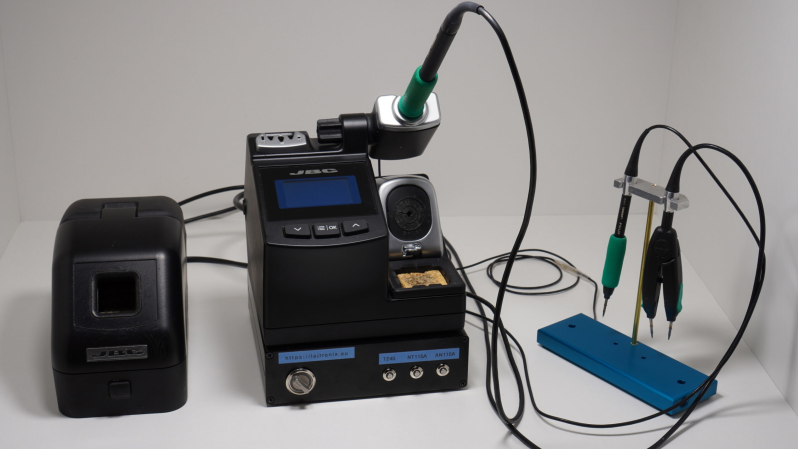Soldering is one of those jobs that are conceptually simple enough, but there’s quite a bit of devil in the detail and having precisely the right tool for the job in hand is essential for speed and quality of results. The higher-quality soldering stations have many options for the hot end, but switching from a simple pencil to hot tweezers often means unplugging one and reattaching the other, and hoping the station recognises the change and does the right thing. [Lajt] had three soldering options and a single output station. Their solution was a custom-built three-way frontend box that provides a push-button selection of the tool to be connected to the station sitting atop.
[Lajt] shows in the blog post how each of their target hot ends is wired and the connectivity the control station expects to determine what is plugged in. Failing to recognise a connected 50 W heating element as if the smaller 25 W unit was still connected would suck, with a huge amount of lag as the temperature of the hot end would fail to keep up with the thermal load during use. When connections are made, it is important to ensure the unit has sufficient time to detect the change in output and configure itself appropriately. An Arduino Pro mini handles the selection between outputs by driving a selection of relays with appropriate timing. An interesting detail here is what [Lajt] calls a ‘sacrificial relay’ in the common ground path, which has a greater contact rating than the others and acts as a secondary switch to save wear on the other relay contacts that would otherwise be hot-switched. All in all, a nicely executed project, which should offer years of service.
We like DIY tools and tool-related hacks. Here’s a DIY Hakko station, a Weller clone unit, and a peek inside TS1C portable unit.















Anyone know what the “mechanical tip cleaner” noise is that he triggers off screen before replacing the iron each time?
It’s the box on the left in the main article picture… it’s nothing more than a motorized rotary (brass) brush with an optical sensor to turn it on when you insert the iron into the opening. A few hundred $s from JBC. I’ve used them before and didn’t see much of a time save… I prefer a manual process.
This link has a good internals pic:
https://www.jbctools.com/clmu-automatic-tip-cleaner-with-metal-brushes-product-1474.html
Interesting that he chose to use mechanical relays instead of a more solid-state solution…
I also imagine if he dug into things a bit more, he could get rid of the front-panel switches altogether and have the system auto-switch upon pickup of the handle (the metal contact on the handle allows the JBC main unit to put the handles in low-power sleep mode when they’re resting in the cradle).